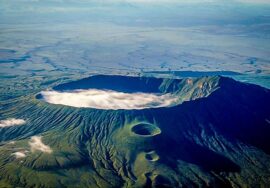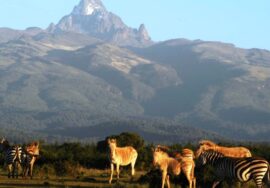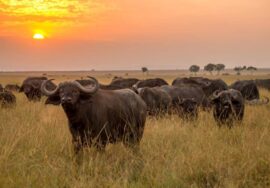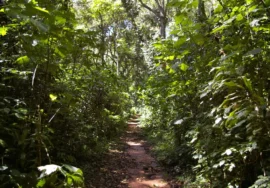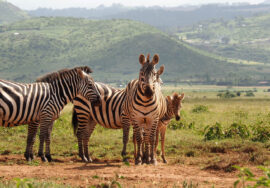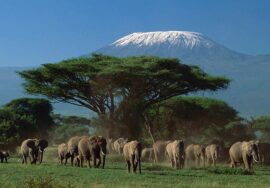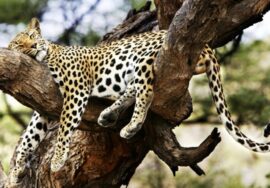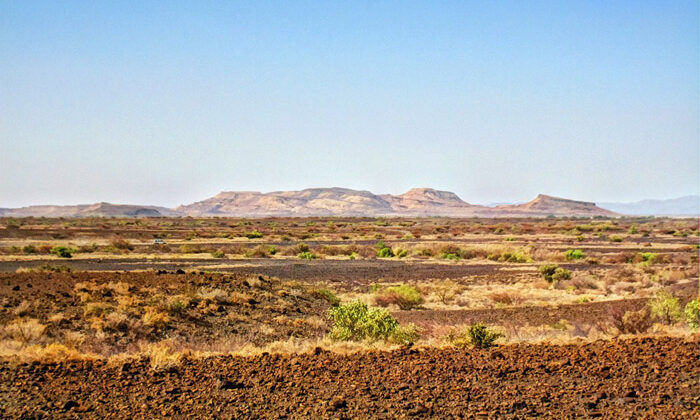
Sibiloi National Park
People who are sick of the same old route can go on an exciting trek in Sibiloi. People who are willing to take the less-traveled path and are eager to be pioneers will find that Sibiloi changes the way they think about life in Africa.
Seeing the Land
Even though it’s very dry, the land is pretty in its own way. You can find grassland, volcanic land, riverine forest, and the shore of a lake in this wilderness. The largest of the Rift Valley Soda Lakes is Lake Turkana, which is also known as the “Jade Sea” because of its huge size and bright color. The lake is on the very northern border of Kenya. It’s a little less than 270 km long.
Sibiloi National Park is on the lake’s eastern side, close to the border with Ethiopia. It covers just under 1600 square kilometers. The Lake Turkana National Parks are made up of Sibiloi National Park, the South Island National Park, and the Central Island National Park.
The Land Where People Were Born
The Sibiloi National Park was made to protect the fossil sites that were only recently found. These sites have helped us learn more about how humans evolved than any other place on Earth.
The Koobi Fora Region is the most interesting place for archaeologists, paleontologists, and geologists. Many sites have studied and written about how the earth has moved, how humans evolved, and how mammals have changed over the last 4 million years. But the most exciting thing is that there is still a huge area of land with fossils that hasn’t been explored yet.
In the past 30 years, a Petrified Forest and thousands of fossils have been found. These include more than 300 hominids and the remains of a giant crocodile, tortoise, and elephant. Dr. Richard Leakey found the skull of an early human at this spot. Since then, scientists have been studying and researching Sibiloi and the Turkana Basin a lot.
Wildlife
The park is very dry and hot, but it shields a wide range of wildlife that is amazing in and of itself. Grève’s Zebra, Beisa Oryx, Gerenuk, and bigger Kudu are some of the animals that can live in dry places that can be found in the park. There are also many predatory species, such as the Lion, the Leopard, the Cheetah, the Striped and Spotted Hyena, the Jackal, and the Caracal. The Nile Crocodiles lay most of their eggs on Central Island.
More than 300 kinds of birds have been seen around Lake Turkana. This number goes up in the summer when migrant species come to the area. Many species can’t live in the alkaline lake, but Flamingos and Pelicans love the salty water and plants that live in it. On the shore, you can see many sea birds, like African Skimmers, Herons, and Gulls. The park is also home to some native species, like the Crested Lark and the Heuglin’s Bustard.
What to do
The park has a great museum that isn’t very big. It’s close to the main study camp. People can take a fly-in trip of Koobi Fora, but to get the most out of the park, they should stay for a few more days. There is a lot to see and do in the area. Besides visiting the park, interacting with the local tribes is a cultural experience that you will never forget and a very useful thing to do. The Gabbra, Turkana, and Dassanach are some of the local groups. They all have rich traditional cultures.
Things to do
It’s interesting to see how the colors of Lake Turkana change as algae grow and the winds blow. The colors go from gray to blue to green. It is the biggest alkaline lake in Africa and the largest desert lake in the world.
Petrified Forest is on the edge of Sibiloi Mountain at Alia Bay. Karsa Waterhole is a rare pool of still fresh water where animals come to drink. Jarigole Pillars is an excavation site of a pre-Iron Age burial ground. Koobi Fora is home to fossilized skeletons. Karari Escarpment is where two more than a million-year-old sites are being studied.
People can go for walks in the petrified forest and along the Koobi Fora spit.
What you need to know
Aside from the salty water on the lake edge and a few small, remote lakes, Sibiloi National Park has no water at all. This place is very dry and hot. A guided fly-in tour or an overland safari through the northern frontier are both choices for a safari. Any kind of expedition should be well-equipped, able to run itself, and led by skilled professionals.


